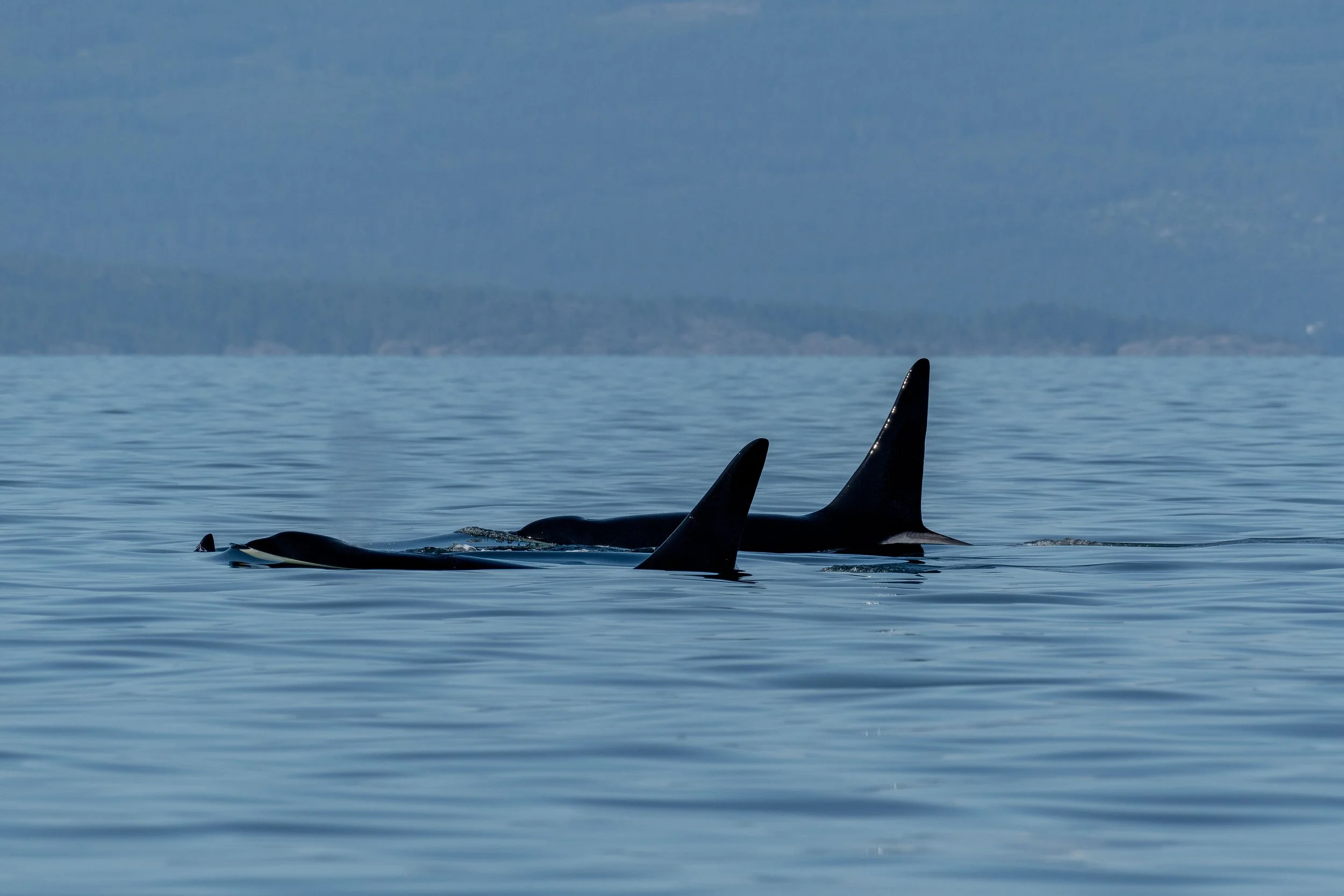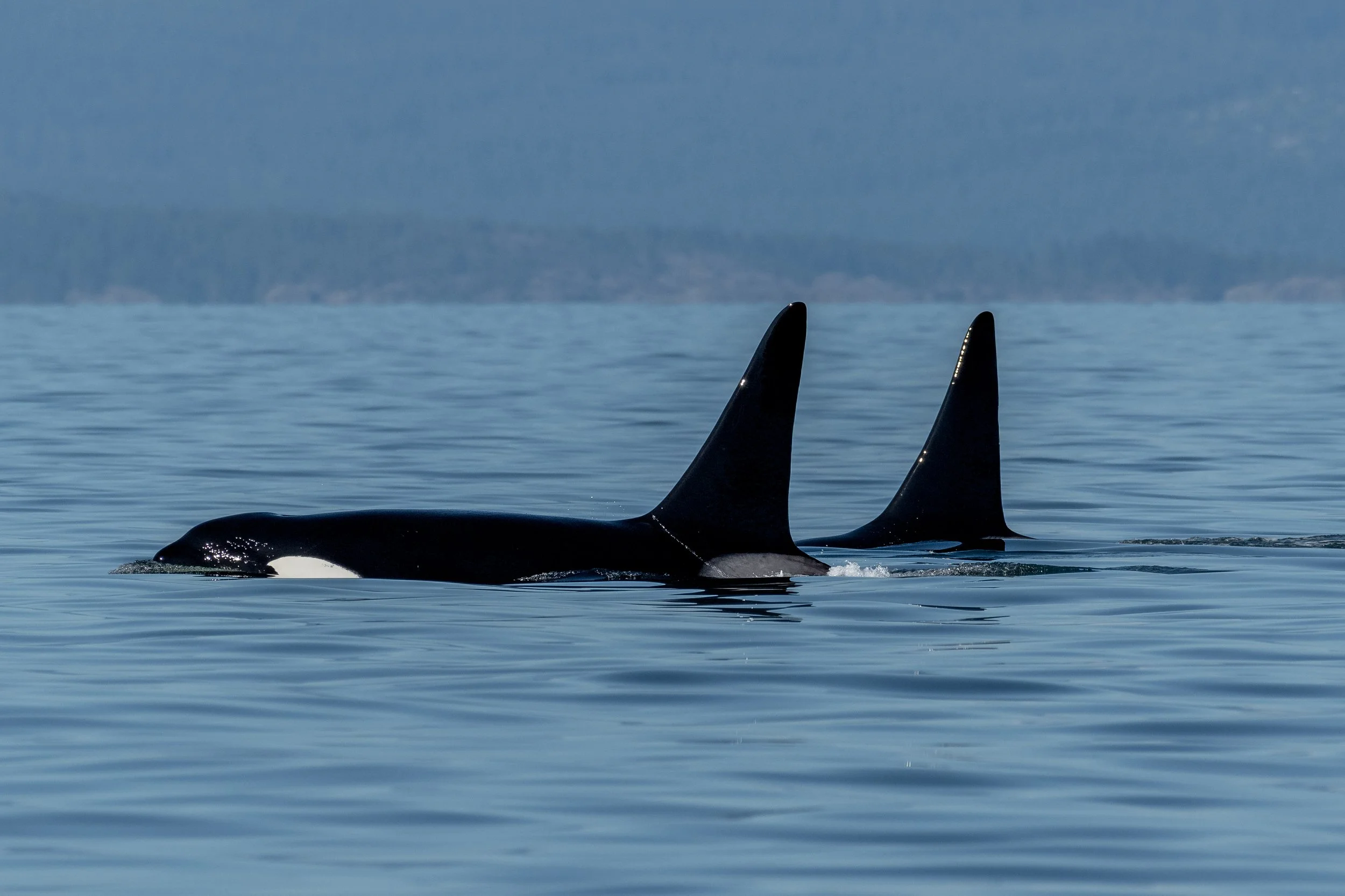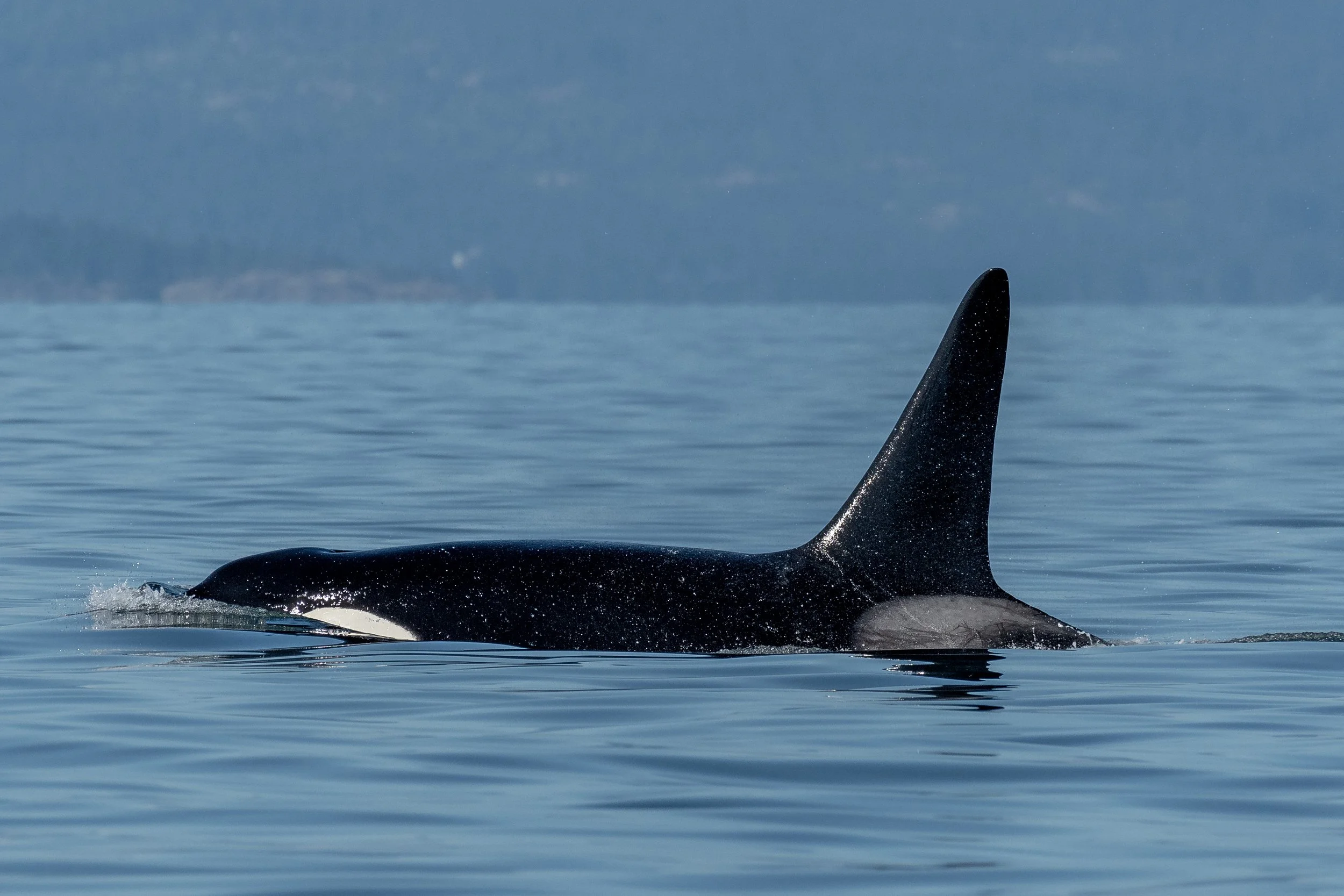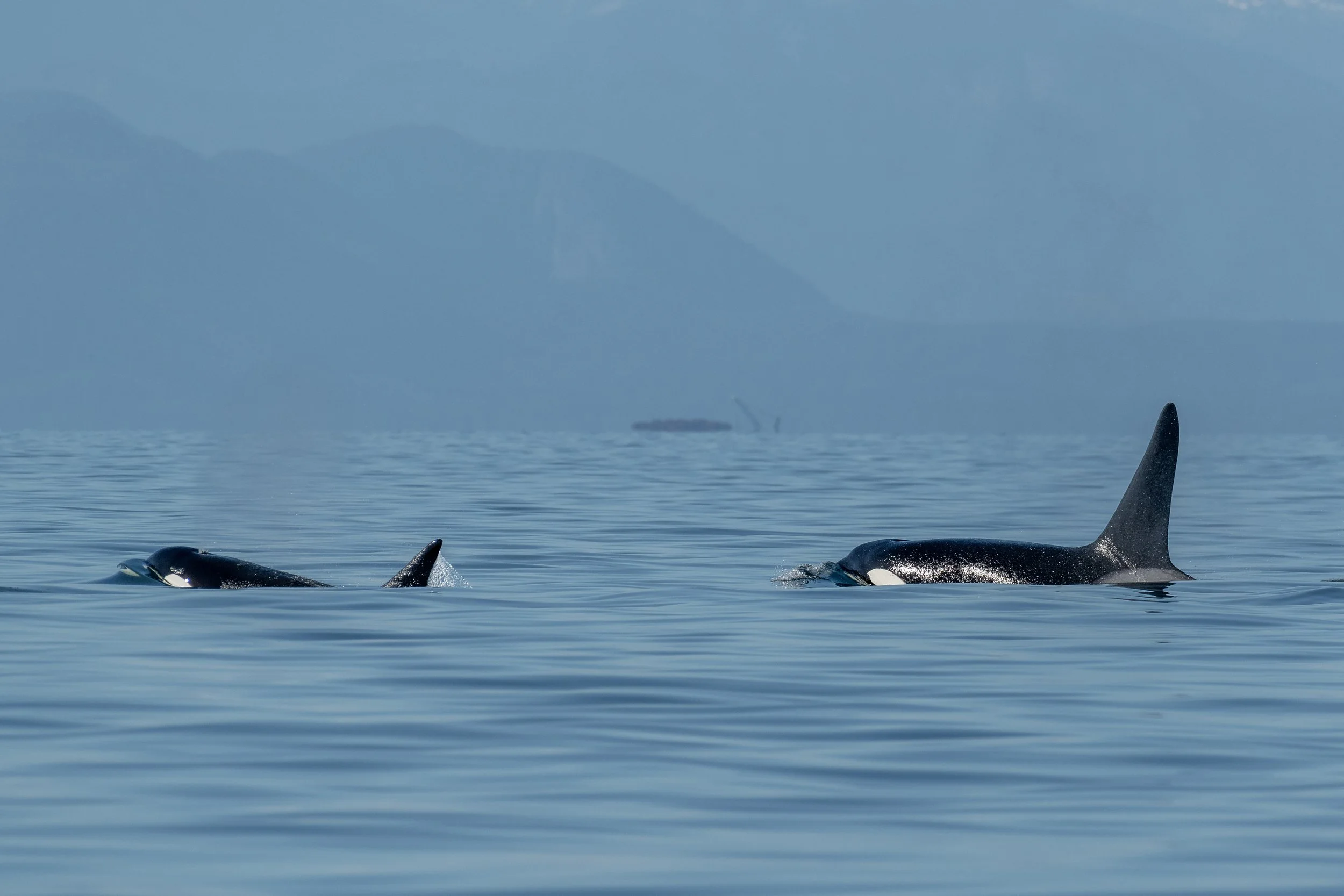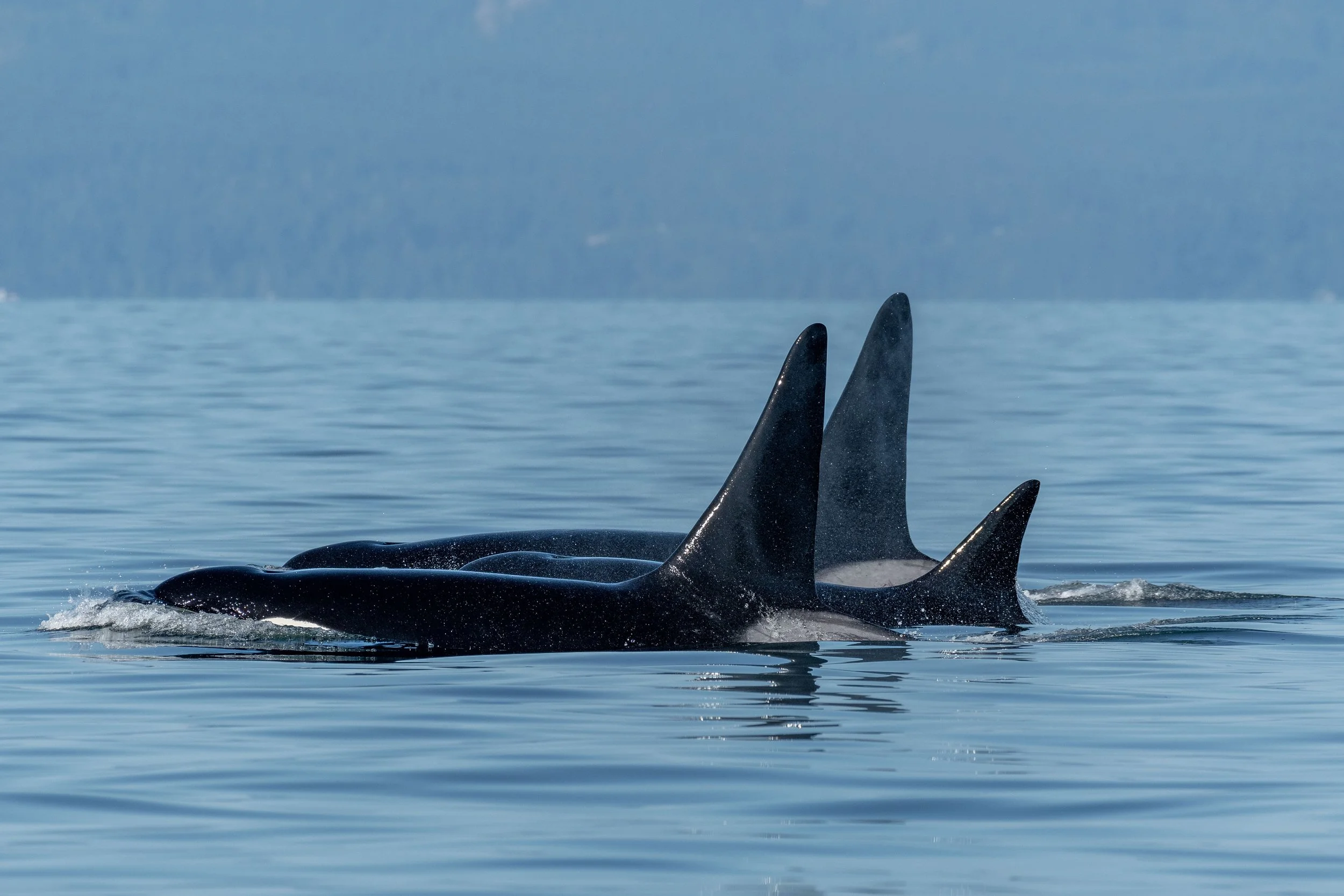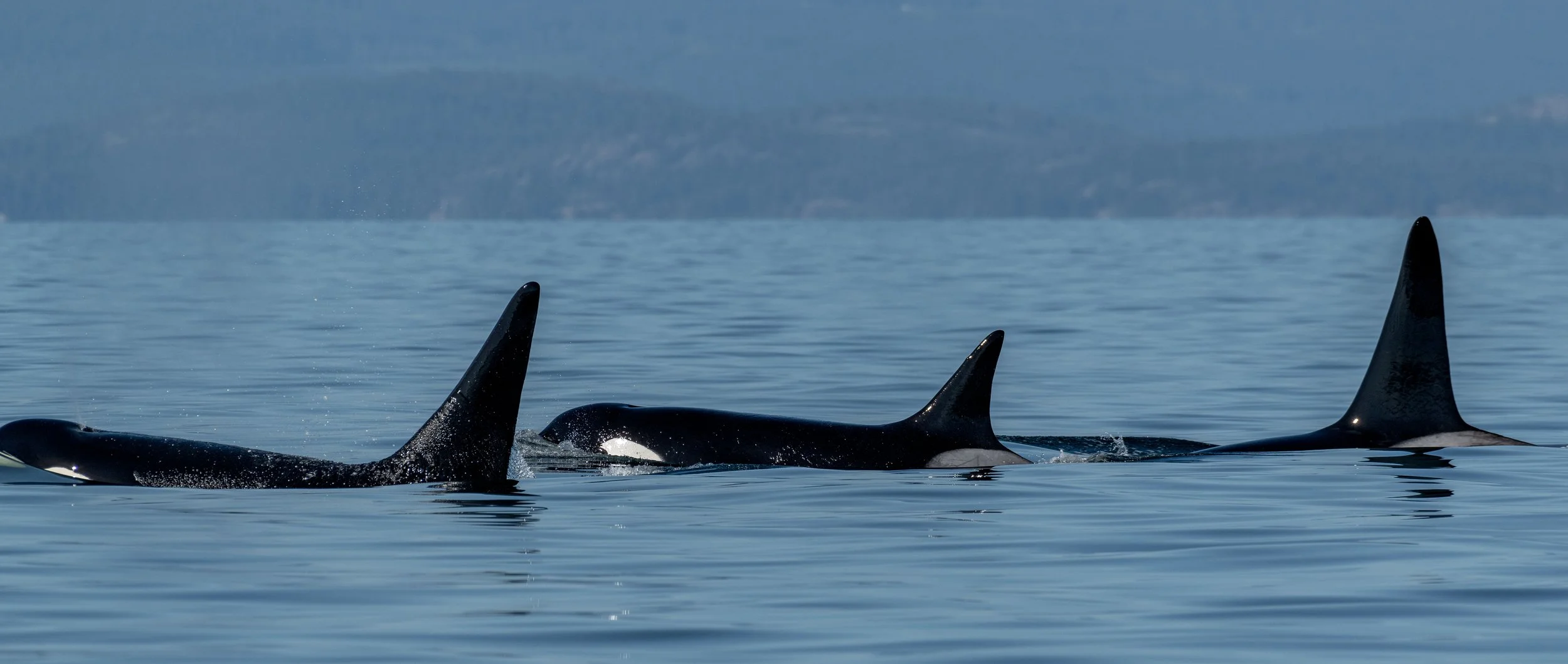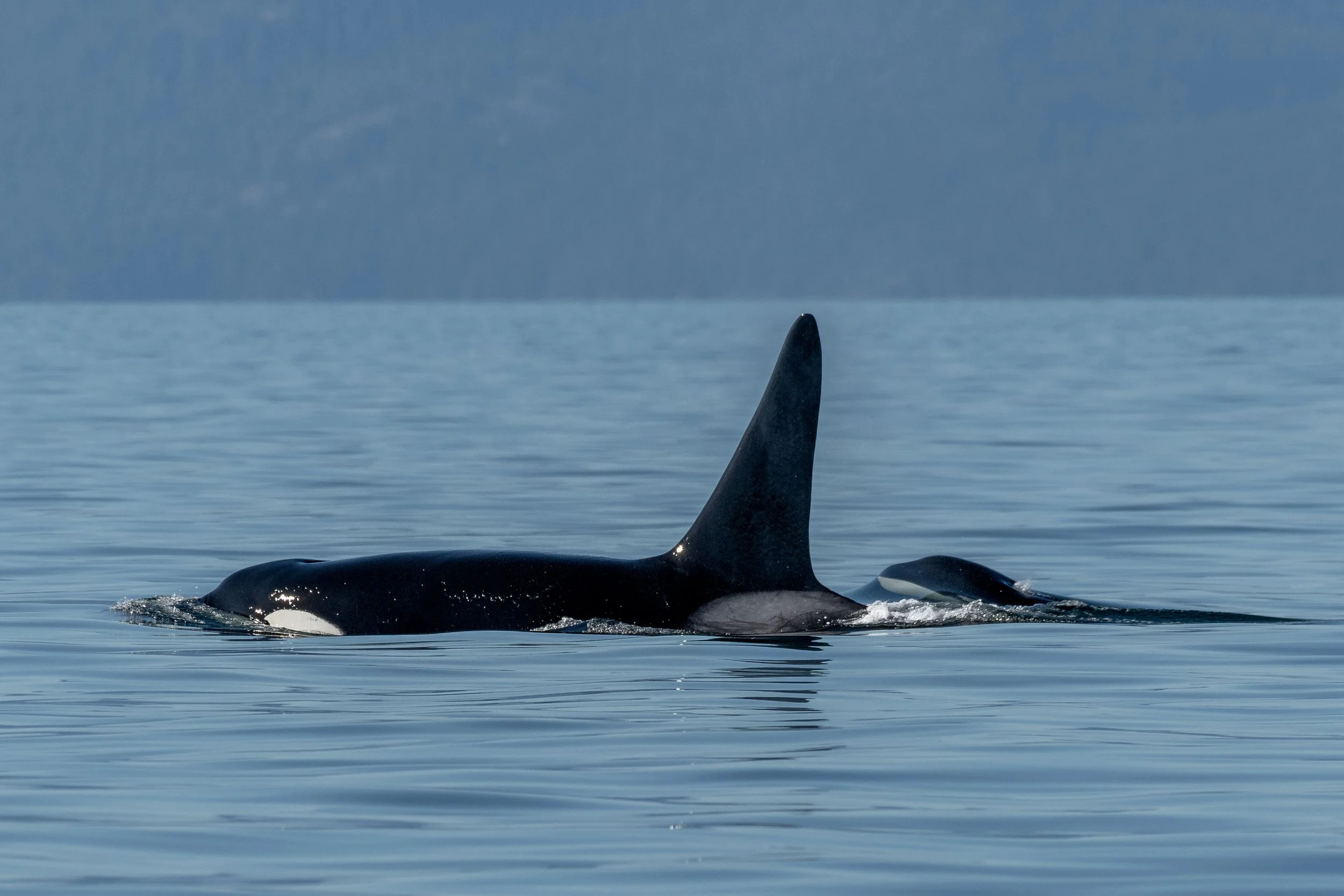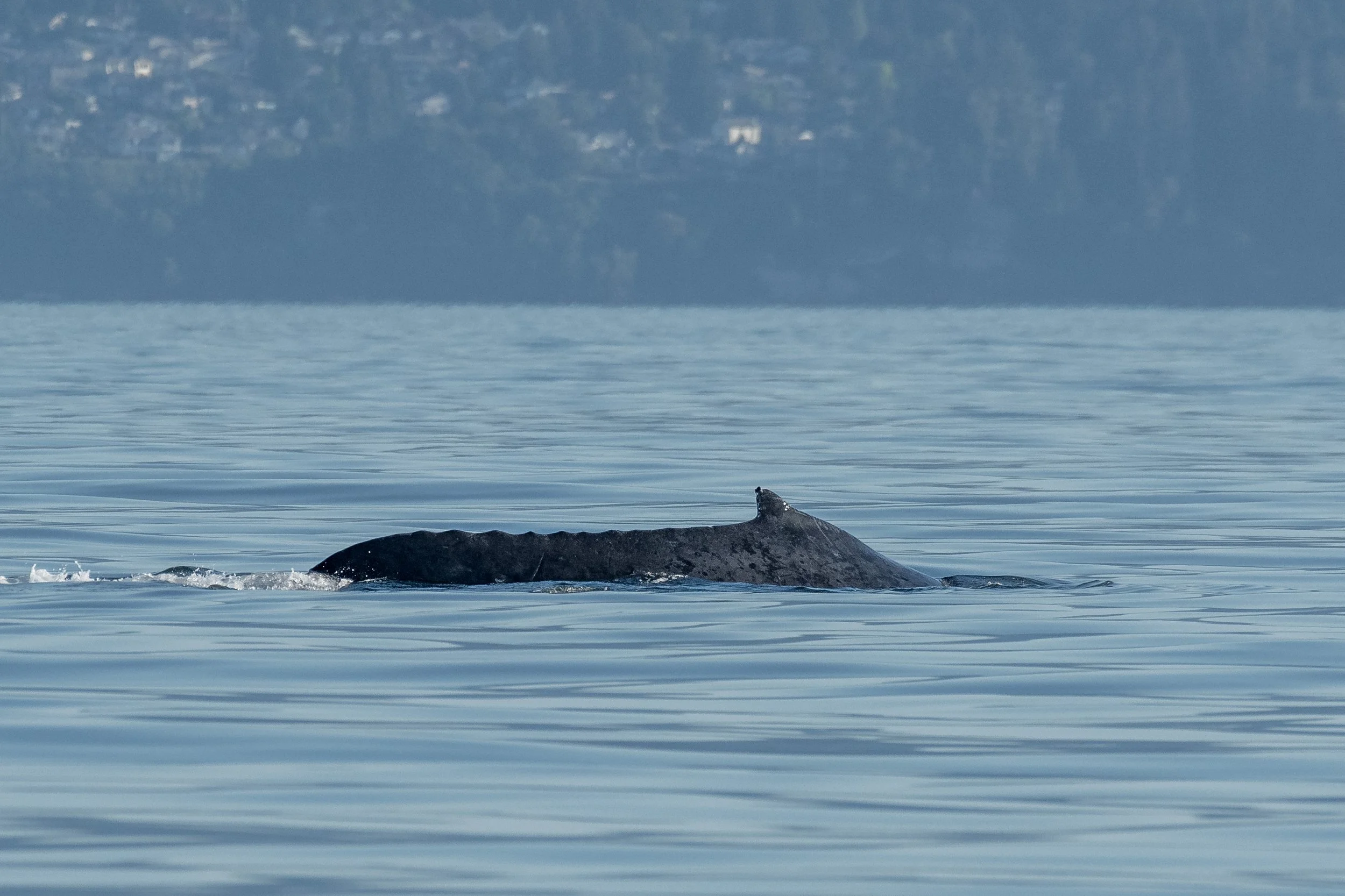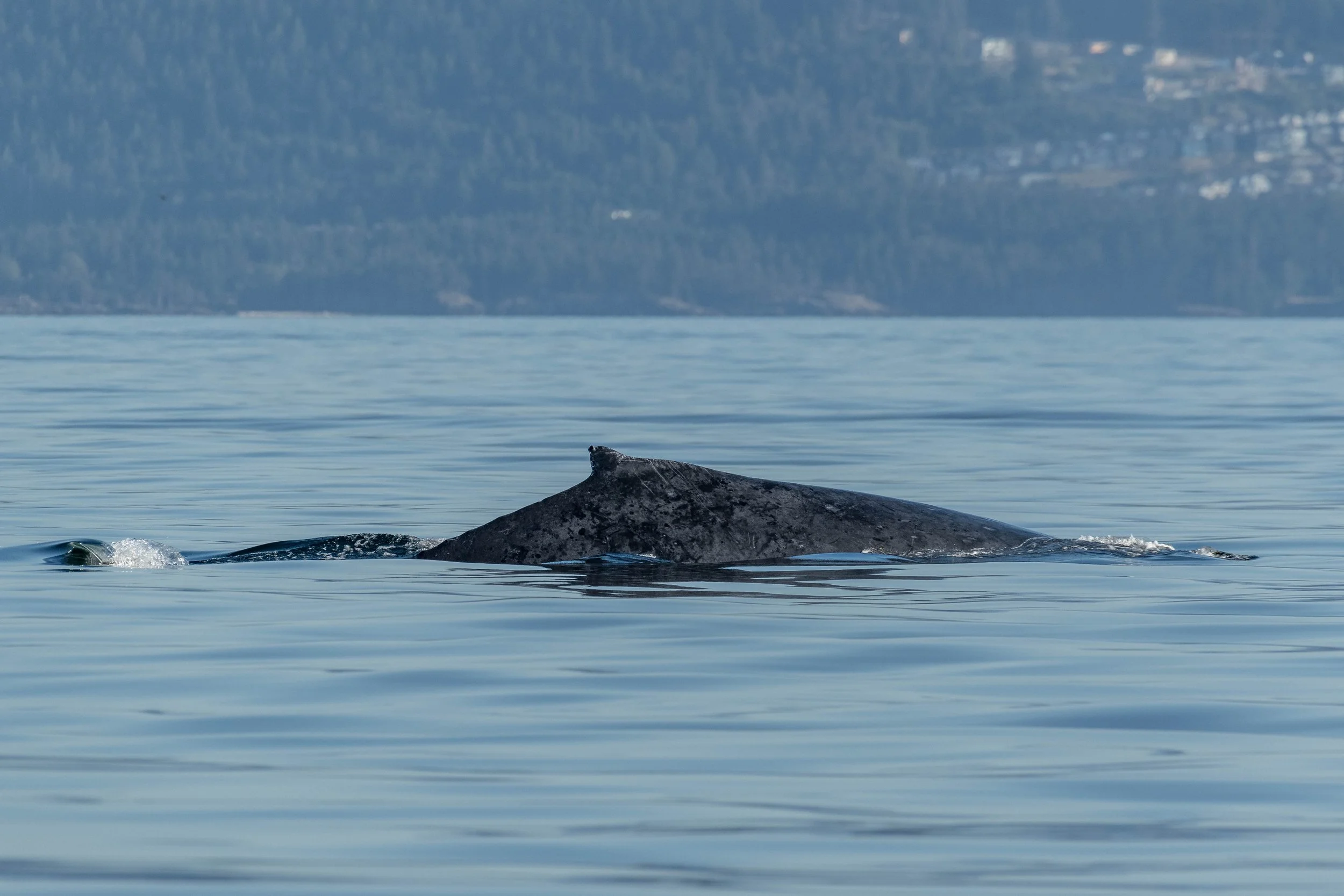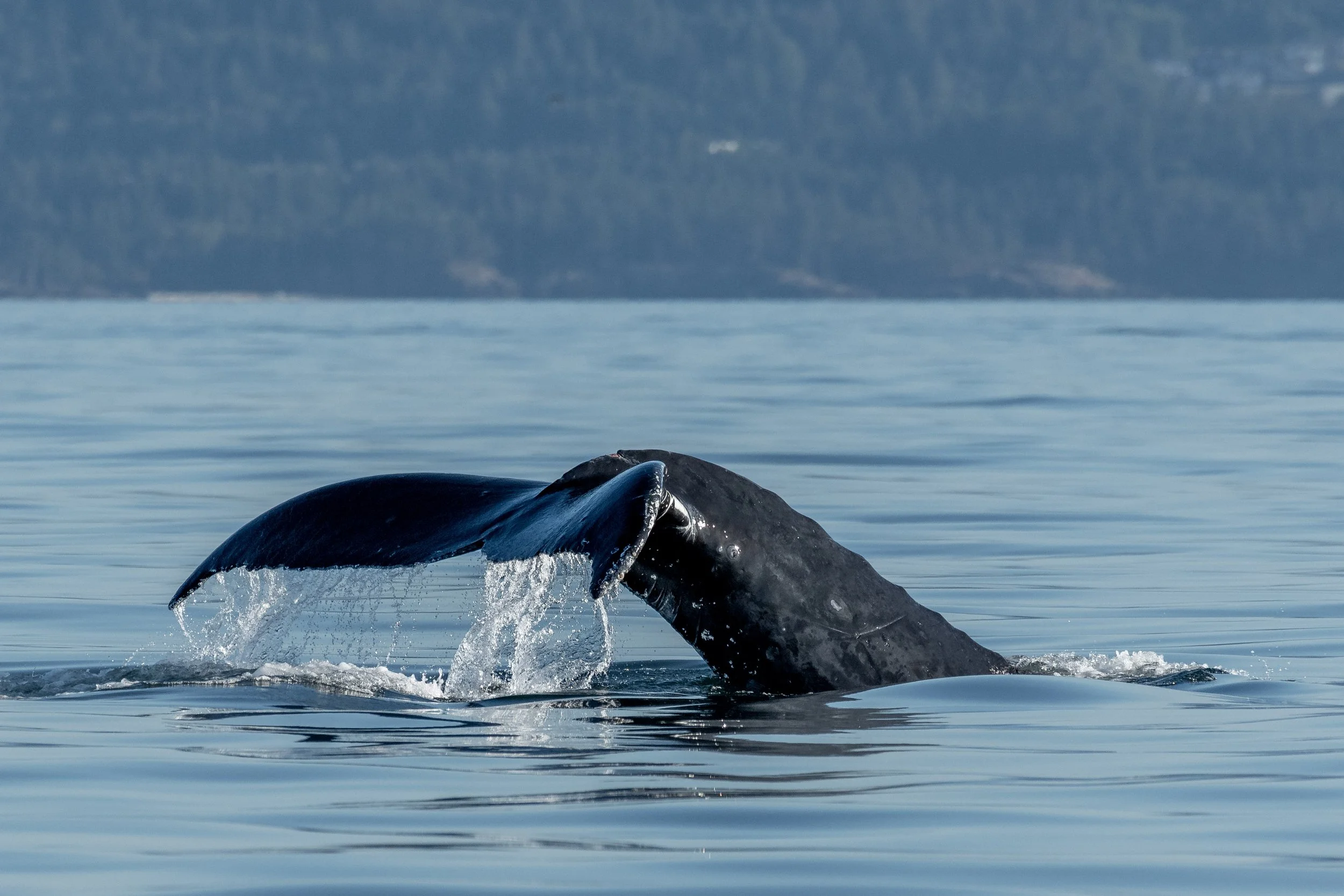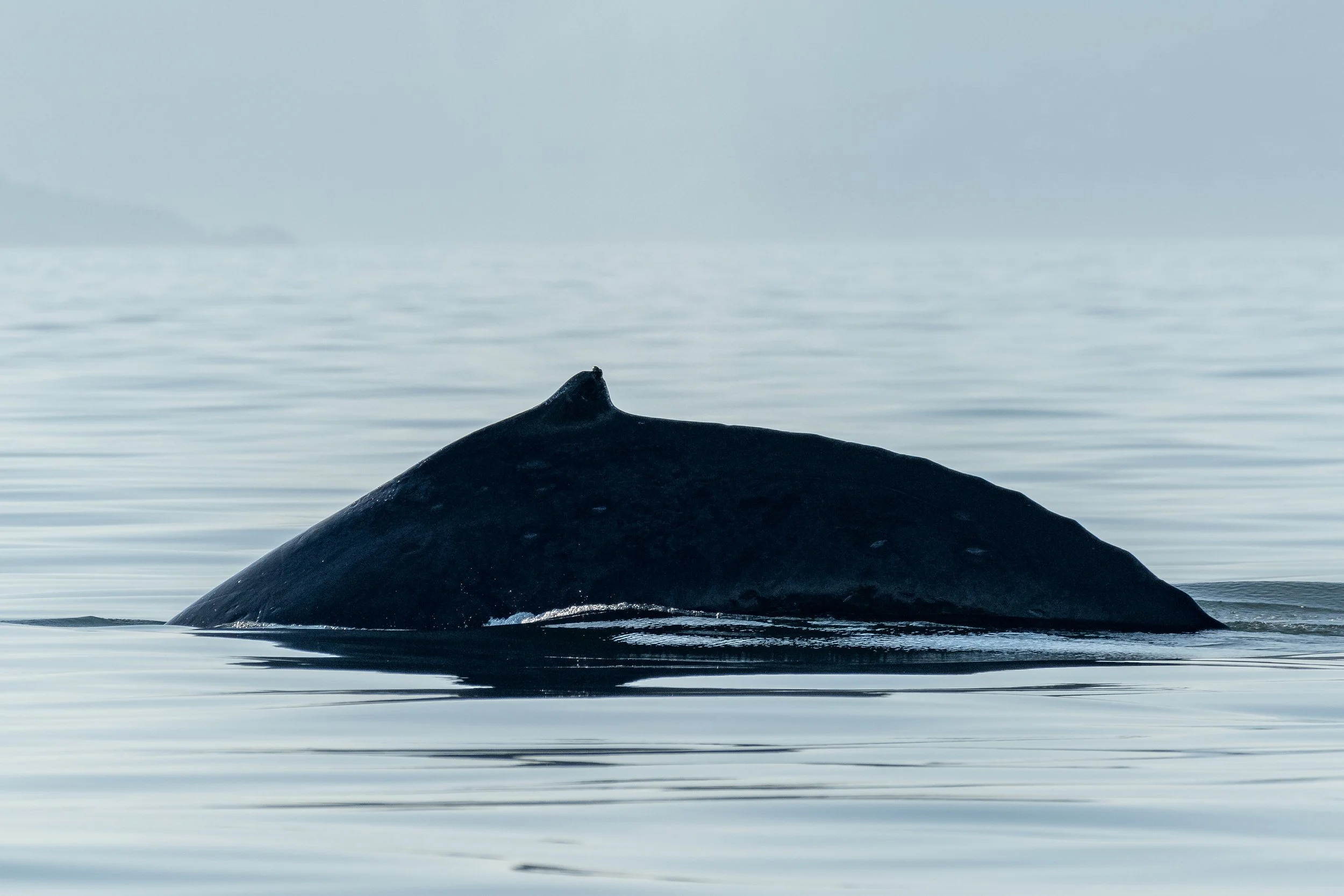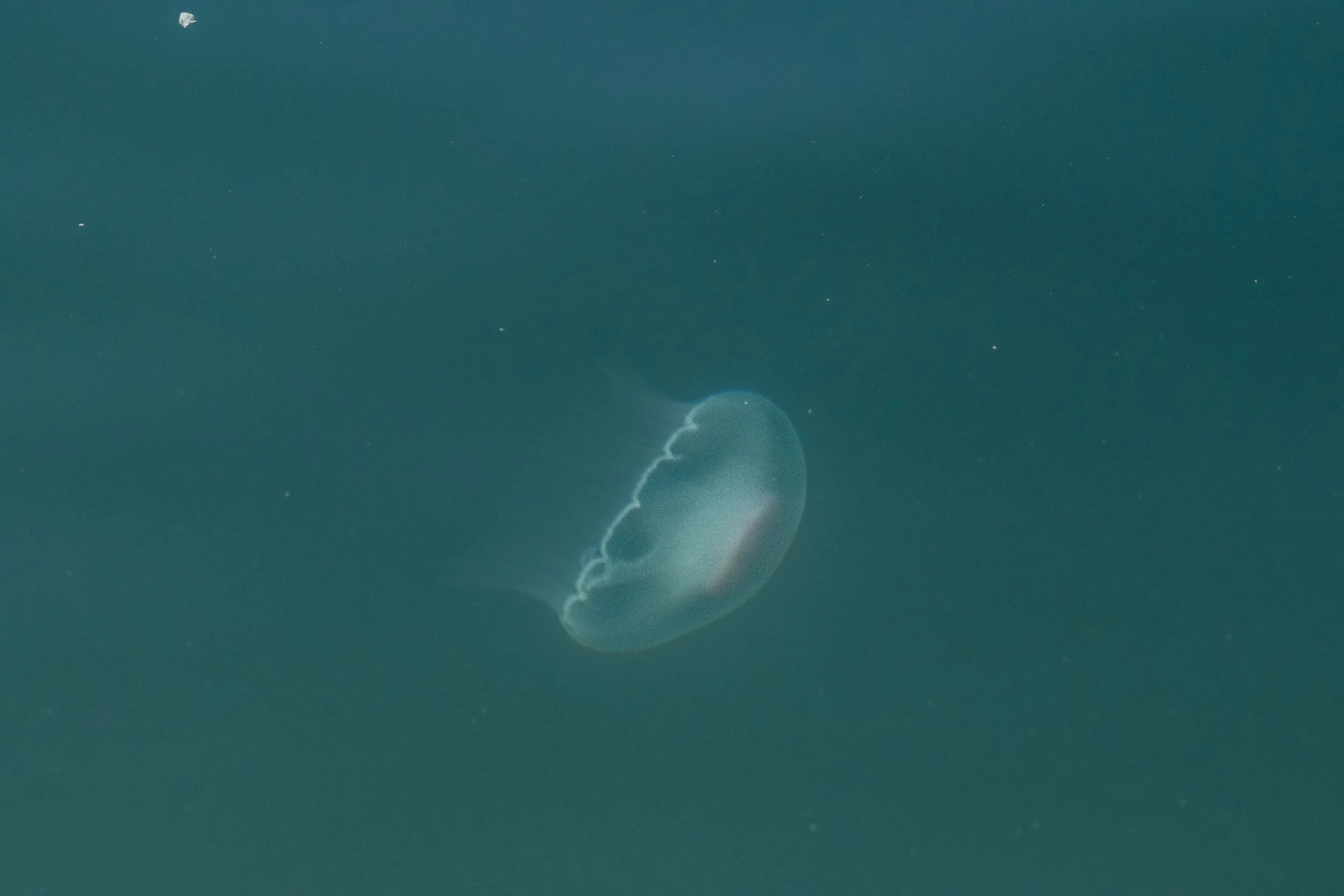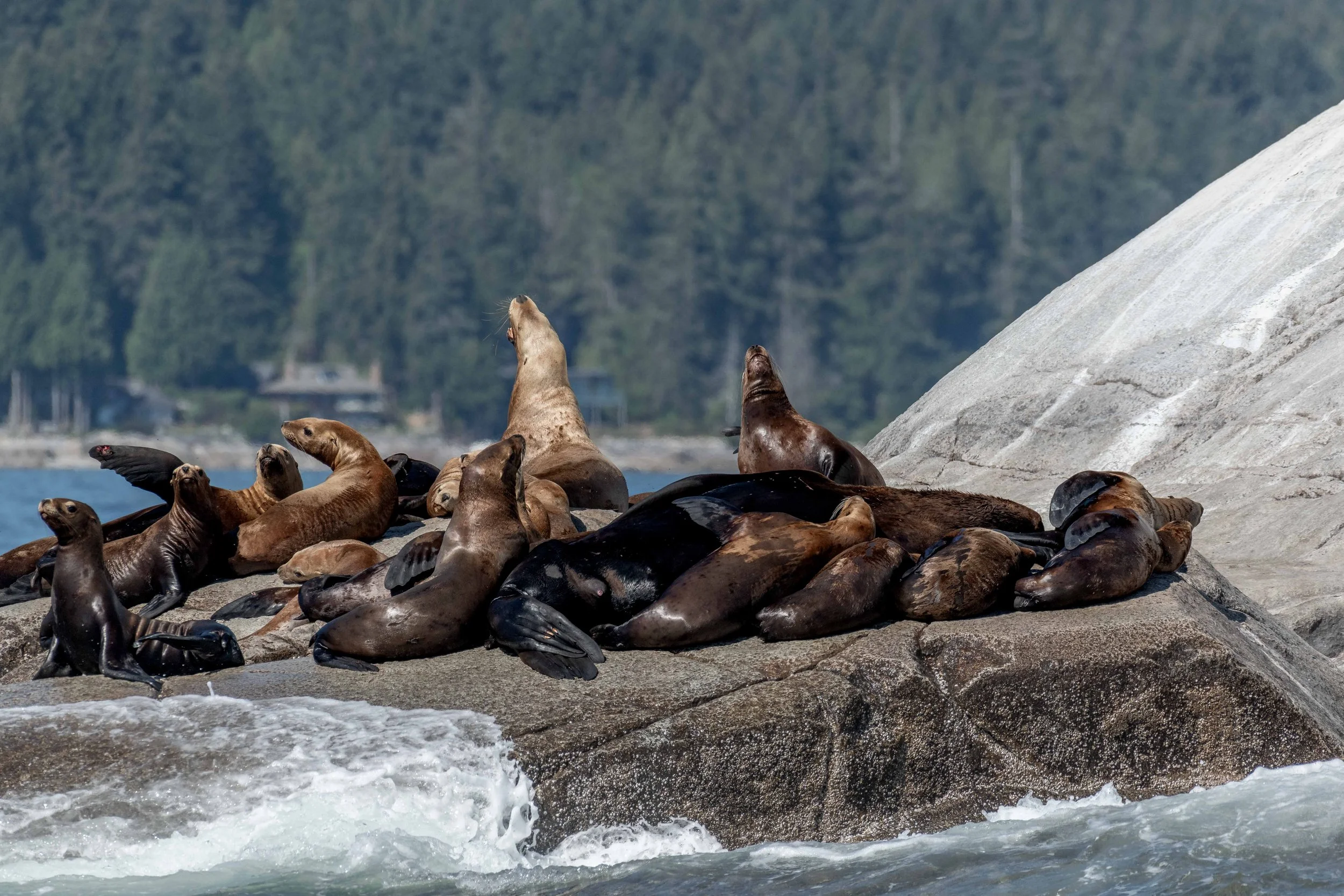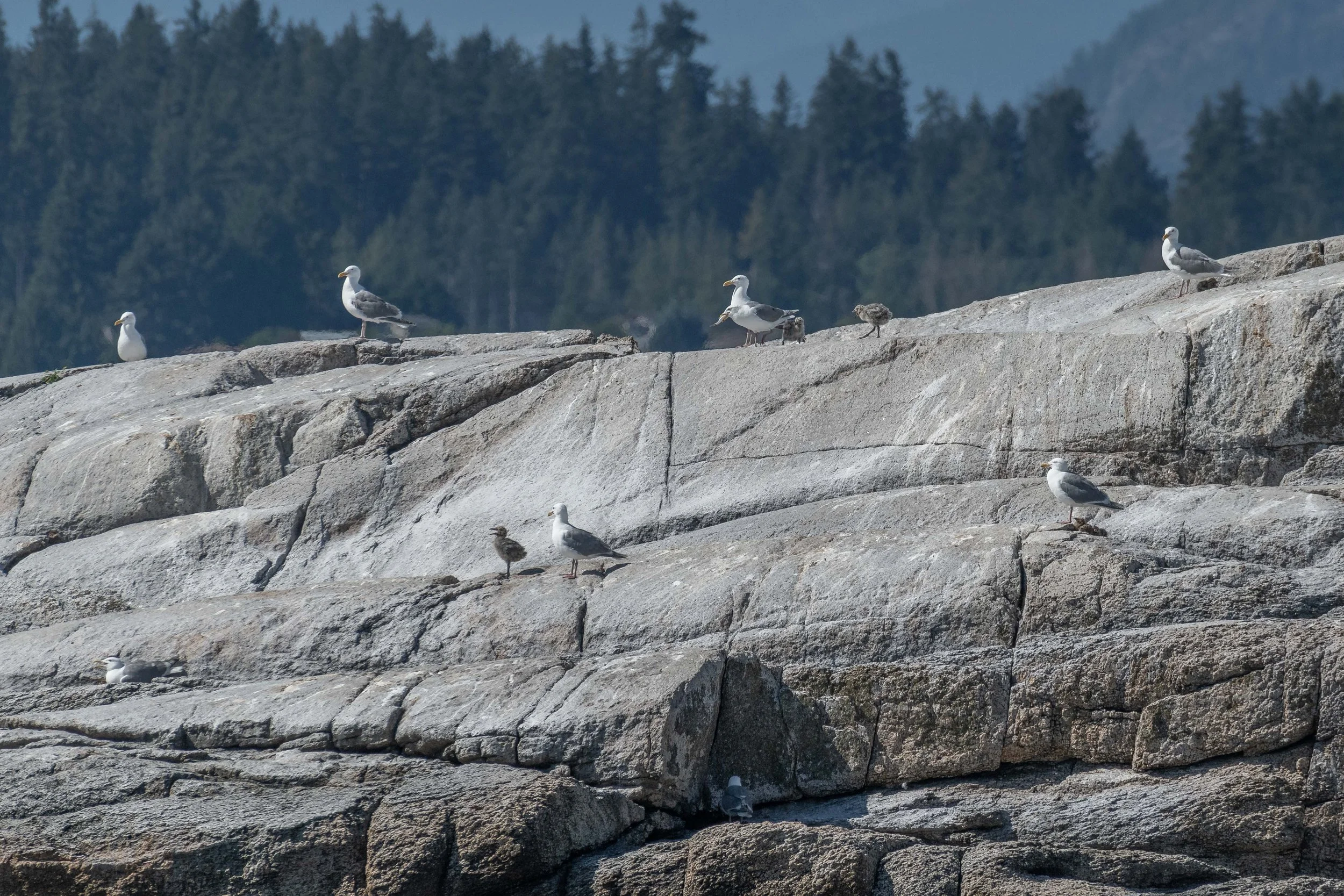July 14, 2024, 3:30 PM - A peaceful evening with double species
The sun was shining, and the morning wind had died down as we left the harbour in search of whales. We made our way into the Georgia Strait, where we often have success when looking for our giant friends. Today was no different, as we soon found a humpback! This big guy was being a little shy, and didn’t show us their fluke while we were with them. We often use the ventral side of the fluke to identify individual humpbacks. Flukes can range from all black to all white and each tail will have different scratches, scars and markings. Each fluke is as unique as a fingerprint! Occasionally, we can also often use a humpback dorsal fin as a way to identify the individual animal. While the differences aren’t always as dramatic on the dorsal as the differences on the fluke, they still exist. Unfortunately, our first whale of the day still remains a mystery to us, having not fluked and having a very non-descript dorsal fin. We’ll continue to try and ID our little mystery whale, and update here if found!
After spending some time with our mystery humpback, we made our way back towards Nanoose where we met up with the T101 family.
T101 Reef ♀ (≤1969)
T101A Rush ♂ (1993)
T101B Lagoon ♂ (1997)
The T101s are a small family of 3 adult whales. Reef is the matriarch and travels with her 2 living sons, Rush and Lagoon. Bigg’s killer whales are “Bigg” Mama’s boys! Males will often spend their entire lives with their mothers. Even though these boys are a lot larger than their mother, Reef is still the boss. Orca live in matriarchal societies where the oldest female is the leader of the family/pod. Females in the Bigg’s ecotype are more independent than their male counterparts. Once a female has a calf or 2 of her own, she will leave her mother’s side and start her own family. This is exactly what Reef’s suspected daughter, T100 Hutchins has done. Although Hutchins has left Reef’s side she still comes to visit her mother from time to time.
Did you know there are multiple ecotypes of orca in British Columbia? There are currently 3 ecotypes consisting of 4 distinct populations: the Transient/Bigg’s Orca, who eat marine mammals, the Resident orca, (consisting of Northern and Southern residents) who eat fish, and the Offshore Orca, who eat sharks. We watch the Bigg’s/Transient Killer whales, but in our area, there are also the Southern Resident Killer Whales. This small population of orcas behave, feed, and even look different than Bigg’s. Unlike Bigg’s, where females leave and start their own families, Southern Resident males and females will stay with their natal pod their whole lives. Different populations of orca have different diets, languages, cultures and even cultural fads! In 1987, a female in the Southern Resident Killer Whale population started a cultural craze when she began wearing a salmon on her head. The salmon hat trend spread to other members of the population throughout the summer. But just as quickly as the trend appeared, it disappeared. Will the passing fad ever return? It made a brief resurgence in 2022, but I guess we will have to wait and see if it bounces back again!
After a lovely time with the T101s on flat calm water, we started to make our way back towards Nanaimo. Suddenly, we spotted more blows on the water. Lucky us, another humpback! This time, it was a whale that was easily identifiable by their dorsal fin alone - Dandelion (BCY1107)! When you look at pictures of Dandelion, have a close look at the end of his tail right before the fluke. Unfortunately, they have relatively fresh entanglement wounds, where it looks like a rope was wrapped around their tail.
Luckily for Dandelion, they will heal from the trauma, but this isn’t the case for all humpbacks that suffer from entanglement. It’s estimated that at least 50% of all humpbacks in the Salish Sea have some form of entanglement scaring. Recently pictures emerged of a humpback who had their fluke completely severed from entanglement. Click that link to see and read more, but be aware, the photos are hard to look at. Entanglement isn’t just a problem for whales here in the Salish Sea, as recently a humpback in Australia was freed from 1700 pounds of nets, rope and buoys that the whale had dragged all the way from Antarctica! Worldwide, experts dedicate their time to freeing these animals from the vast amounts of marine debris. Here in the Salish Sea, DFO will send out a specialized team to release an animal that has been entangled, safely freeing the animal while keeping rescuers safe as well. Every once and awhile, we get good news following an entanglement, and this summer was one of those times. In 2022, a humpback named Slits (BCY0946) became deeply entangled in fishing line, and with DFO’s help, was finally released. This year, Slits returned, and with a new baby in tow! Her very first calf, and one that was only possible thanks to the folks at DFO. Check out this article to read more about Slits and her new baby, and watch the video of her rescue.
While we were so lucky to see so many whales today, we also got to see a bunch of other friends including Steller sea lions, jelly fish, cormorants, oyster catchers and even baby gulls! A wonderful end to our trip.
All photos taken by Marine Naturalist Aly Kohlman.
T101A Rush cruising along
T101 Reef glides through the water.
T101A Rush and T101B Lagoon come up for a breath.
T101A Rush and T101B Lagoon.
T101A Rush shows off that dorsal
T101 Reef and T101A Rush.
T101A Rush, T101 Reef, and T101B Lagoon spaced out.
T101B Lagoon (front), T101 Reef, and T101A Rush in a cuddle puddle.
T101B Lagoon, T101 Reef, and T101A Rush.
T101B Lagoon.
T101A Rush while one comes up behind him.
Dandelion starts to fluke.
Dandelion, with their very identifiable dorsal.
Dandelion.
Dandelion, sporting fresh scars.
Dandelion’s fluke.
Dandelion.
A moon jelly bobs along.
Some vocal Steller sea lions!
A Gull with a very yappy baby beside them.
More babies!
A small group of Cormorants sunning and enjoying themselves.
A pair of Black Oystercatchers.



